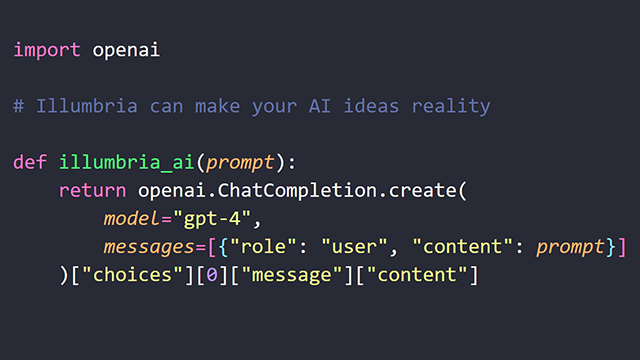Artificial intelligence has moved from science fiction to business reality with breathtaking speed. What began as experimental technology has rapidly become a transformative force across industries, reshaping how organizations operate, compete, and create value. As we look toward the horizon, it's clear that AI's impact on business is just beginning—the coming years will bring even more profound changes as the technology continues to evolve and mature.
In this article, we'll explore the emerging trends that will define AI's future in business, examine which industries are leading the way in AI adoption, and provide insights on how organizations can prepare for an AI-transformed future.
The Evolution of Business AI: Where We've Been and Where We're Going
To understand where AI in business is headed, it's helpful to consider how rapidly the technology has evolved in recent years. This evolution has unfolded in distinct phases, each building on the capabilities of the previous one:
Data-Driven Decision Making
Early business AI focused primarily on analytics—using machine learning to extract insights from large datasets and inform human decision-making. Organizations implemented predictive analytics, customer segmentation, and basic recommendation systems, but AI remained largely separate from core business processes.
Process Optimization
As AI capabilities advanced, businesses began embedding the technology directly into operational workflows. Robotic Process Automation (RPA) enhanced with AI enabled organizations to automate increasingly complex tasks, from document processing to customer service interactions, driving significant efficiency gains.
Content and Product Creation
The emergence of sophisticated generative AI models like GPT-4, DALL-E, and Midjourney marked a paradigm shift. These technologies enabled businesses to generate human-quality text, images, code, and other content at scale, opening new frontiers in marketing, product development, and creative work.
Self-Directing Systems
We're now entering an era where AI systems can increasingly operate with greater autonomy, making complex decisions and taking actions with minimal human oversight. This shift is enabling truly intelligent automation of end-to-end business processes and the emergence of AI agents that can execute multi-step tasks with human-like reasoning.
Human-AI Teaming
Looking further ahead, we anticipate the development of sophisticated human-AI collaboration models where AI systems function as true partners to human workers. These systems will adapt to individual working styles, proactively contribute ideas, and seamlessly integrate into creative and strategic processes.
This evolution reflects a fundamental shift in AI's role in business—from a tool that helps humans work better to an active participant in business operations and strategy. The organizations that thrive in this environment will be those that effectively harness AI's evolving capabilities while developing new models for human-AI collaboration.
Seven Emerging Trends Shaping the Future of Business AI
As we look to the immediate future, several key trends are emerging that will define how AI transforms business in the coming years:
1. Multimodal AI Systems
The next generation of AI systems will seamlessly integrate multiple forms of data and interaction—text, images, audio, video, and more. These multimodal capabilities will enable more natural and comprehensive AI applications that can understand and generate content across different formats.
For businesses, this means AI systems that can analyze customer interactions across channels, extract insights from diverse data sources, and generate rich, multimedia content. Imagine customer service systems that can simultaneously analyze a customer's tone of voice, facial expressions, and message content to provide truly personalized support, or content creation tools that can generate coordinated campaigns spanning text, images, and video.
2. AI Agents and Autonomous Systems
We're witnessing the emergence of AI agents—systems that can execute complex, multi-step tasks with minimal human supervision. These agents combine large language models with planning capabilities, tool use, and memory to accomplish sophisticated goals.
In business contexts, AI agents will increasingly handle end-to-end processes like customer onboarding, vendor management, or market research. For example, a procurement agent might identify supply shortages, research alternative vendors, negotiate terms, and place orders—all while keeping human managers informed of key decisions and unusual situations.
3. Specialized Industry AI
While general-purpose AI models have driven much of the recent innovation, the next wave will feature increasingly specialized AI systems tailored to specific industries and business functions. These specialized models will incorporate domain knowledge, industry regulations, and function-specific capabilities.
We're already seeing this trend in healthcare (with models specialized for medical diagnosis and treatment planning), finance (with systems designed for risk assessment and regulatory compliance), and legal services (with AI tailored for contract analysis and case research). This specialization will accelerate, with AI systems that deeply understand the unique challenges and opportunities in each business domain.
4. Democratized AI Development
AI development is becoming increasingly accessible to non-technical business users through no-code and low-code platforms. This democratization will allow domain experts throughout organizations to create AI solutions without deep technical expertise.
Marketing teams will build their own customer segmentation models, operations teams will develop custom process automation, and product teams will create specialized recommendation systems—all without requiring extensive data science resources. This shift will dramatically accelerate AI adoption and innovation across business functions.
5. Embedded AI Everywhere
AI capabilities are increasingly being embedded directly into the tools and platforms businesses use every day. From CRM systems with built-in customer insights to design software with generative capabilities, AI is becoming an invisible but powerful component of the business technology stack.
This embedded approach makes AI more accessible and immediately useful, allowing organizations to benefit from advanced capabilities without implementing separate AI systems. It also creates opportunities for continuous intelligence—real-time insights and recommendations delivered within the flow of work.
6. Responsible AI at Scale
As AI becomes more pervasive in business operations, responsible AI practices are evolving from aspirational guidelines to concrete governance frameworks and technical solutions. Organizations are implementing comprehensive approaches to address bias, privacy, transparency, and accountability.
This trend is driven both by regulatory pressures (like the EU AI Act and similar legislation emerging globally) and by growing recognition that responsible AI is essential for building trust with customers, employees, and other stakeholders. The most successful organizations will integrate ethical considerations throughout the AI lifecycle, from design and development to deployment and monitoring.
7. AI-Native Business Models
Perhaps most transformatively, AI is enabling entirely new business models that wouldn't be possible without the technology. From hyper-personalized products and services to predictive business operations, organizations are reimagining how they create and deliver value.
Examples include:
- Healthcare providers offering continuous monitoring and preventive interventions based on AI analysis of patient data
- Manufacturers implementing predictive maintenance-as-a-service models
- Financial institutions developing dynamic risk assessment and pricing models that adapt in real-time to changing conditions
- Retailers creating truly omnichannel experiences with consistent personalization across physical and digital touchpoints
These AI-native business models often feature greater adaptability, more personalized customer experiences, and more efficient resource utilization than traditional approaches.
Key Questions for Business Leaders
As these trends reshape the business landscape, executives should consider several critical questions:
- Strategic Impact: How might AI transform our industry's value chain, and where can we create competitive advantage?
- Organizational Readiness: Do we have the data infrastructure, talent, and governance frameworks needed to leverage advanced AI effectively?
- Human-AI Collaboration: How will we redesign workflows and roles to maximize the complementary strengths of human workers and AI systems?
- Ethical Implications: What ethical risks might arise from our AI implementations, and how will we address them?
- Business Model Innovation: Could AI enable entirely new ways of creating and delivering value to our customers?
Industry Leaders: Who's Leveraging AI Most Effectively
While AI is transforming businesses across sectors, some industries are adopting the technology more rapidly and effectively than others. Understanding these patterns can provide valuable insights for organizations in any sector.
| Industry | AI Adoption Level | Key Applications | Business Impact |
|---|---|---|---|
| Financial Services | High | Risk assessment, fraud detection, personalized banking, algorithmic trading | Reduced risk exposure, improved customer experience, operational efficiency |
| Healthcare | Medium-High | Diagnostic support, treatment planning, drug discovery, administrative automation | Improved clinical outcomes, reduced costs, accelerated research |
| Retail | Medium-High | Demand forecasting, personalized recommendations, inventory optimization, visual search | Increased sales, reduced inventory costs, enhanced customer loyalty |
| Manufacturing | Medium | Predictive maintenance, quality control, supply chain optimization, generative design | Reduced downtime, improved product quality, supply chain resilience |
| Professional Services | Medium | Document analysis, research automation, knowledge management, client insights | Increased productivity, enhanced service quality, new service offerings |
| Energy & Utilities | Medium-Low | Grid optimization, predictive maintenance, energy forecasting, resource exploration | Improved reliability, reduced costs, enhanced sustainability |
| Construction | Low | Design optimization, project planning, safety monitoring, material management | Reduced project delays, improved safety, cost savings |
What distinguishes the leading industries? Several factors appear to drive successful AI adoption:
- Data maturity: Industries with robust data collection and management practices can more readily implement effective AI solutions
- Clear use cases: Sectors with well-defined, high-value problems that AI can address show faster adoption
- Competitive pressure: Industries facing intense competition or disruption often accelerate AI implementation
- Regulatory environment: Sectors with supportive or clarified regulatory frameworks for AI adoption move more quickly
- Technical talent: Industries that can attract and retain AI expertise show more advanced implementation
Importantly, even within industries with lower overall adoption rates, individual organizations are achieving remarkable results with AI. The opportunity to gain competitive advantage through effective AI implementation exists in every sector.
Preparing Your Organization for the AI-Transformed Future
As AI continues to evolve and transform business, organizations must take deliberate steps to prepare for this future. Based on our work with clients across industries, we've identified five key areas that organizations should focus on:
1. Develop an AI Strategy with Clear Business Objectives
Effective AI implementation begins with a clear strategy that aligns with your organization's broader business goals. Rather than pursuing AI for its own sake, identify specific business challenges or opportunities where AI can create measurable value.
This strategy should address:
- Priority use cases based on business impact and feasibility
- Required capabilities and resources
- Implementation roadmap with clear milestones
- Governance framework for responsible AI development
- Metrics for measuring success and ROI
Organizations that anchor their AI initiatives in business strategy are significantly more likely to achieve meaningful results than those pursuing technology-first approaches.
2. Build Your Data Foundation
AI systems are only as good as the data they're built on. Organizations must develop robust data infrastructure and governance practices to support effective AI implementation.
Key elements of a strong data foundation include:
- Data collection and integration across relevant sources
- Data quality assurance processes
- Appropriate data access controls and security measures
- Metadata management for improved discoverability
- Data governance policies that balance innovation with compliance
While building this foundation requires significant investment, it creates value beyond AI by enabling more data-driven decision-making throughout the organization.
3. Develop AI Talent and Literacy
The AI skills gap remains a significant challenge for many organizations. Addressing this gap requires a multi-faceted approach to talent development:
- Technical expertise: Attract and retain specialists in machine learning, data science, and AI engineering
- Domain knowledge: Develop professionals who understand both AI capabilities and specific business domains
- AI literacy: Build basic AI understanding across the organization, especially among leaders and decision-makers
- Ethical awareness: Ensure teams understand the ethical implications of AI systems
Organizations should combine strategic hiring, partnerships with external experts, and internal training programs to build the necessary capabilities.
4. Redesign Workflows and Roles for Human-AI Collaboration
As AI systems become more capable, organizations must rethink how work gets done. This involves redesigning workflows and roles to maximize the complementary strengths of humans and AI.
Effective human-AI collaboration models typically:
- Assign routine, repetitive tasks to AI systems
- Keep humans in the loop for judgment-intensive decisions
- Use AI to augment human capabilities rather than replace them
- Create clear handoffs between AI systems and human workers
- Provide appropriate oversight and intervention mechanisms
Organizations that proactively redesign work for human-AI collaboration can achieve both efficiency gains and improved employee experience.
5. Establish Responsible AI Governance
As AI becomes more pervasive in business operations, organizations must implement governance frameworks that ensure responsible development and use. These frameworks should address:
- Bias detection and mitigation: Processes to identify and address potential biases in AI systems
- Transparency and explainability: Approaches to understanding and communicating how AI systems make decisions
- Privacy protection: Safeguards for sensitive data used in AI development and deployment
- Accountability structures: Clear roles and responsibilities for AI outcomes
- Continuous monitoring: Systems to track AI performance and detect potential issues
Responsible AI governance isn't just about risk management—it's essential for building trust with customers, employees, and other stakeholders.
"The organizations that will thrive in the AI era are those that view the technology not as a silver bullet, but as a powerful tool that requires thoughtful implementation, continuous learning, and a clear focus on creating value for customers and stakeholders."
Conclusion: Navigating the AI-Transformed Future
The future of AI in business is not a distant prospect—it's unfolding now, with profound implications for organizations across industries. The technology will continue to evolve rapidly, creating both opportunities and challenges for business leaders.
Organizations that approach this transformation strategically—with clear business objectives, strong data foundations, appropriate talent, redesigned workflows, and responsible governance—will be best positioned to thrive in this AI-transformed future. Those that delay or pursue fragmented approaches risk falling behind more agile competitors.
At Illumbria, we're committed to helping organizations navigate this complex landscape, combining deep technical expertise with strategic business understanding to create AI solutions that deliver measurable value. Whether you're just beginning your AI journey or looking to accelerate existing initiatives, we're here to help you turn AI's potential into business reality.



